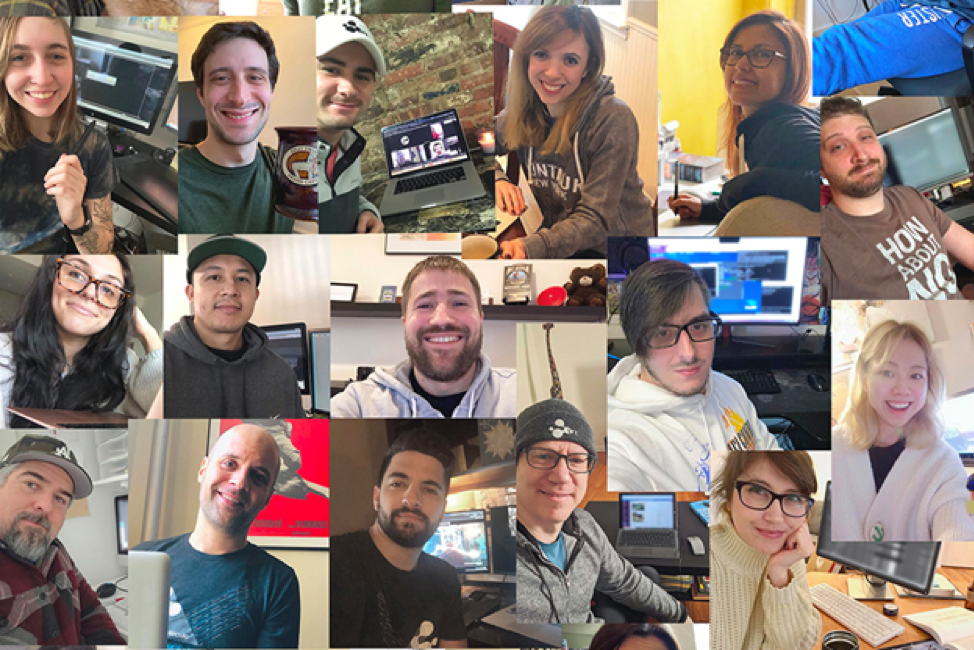AWS for M&E Blog
Virtual workstations on AWS powered by NVIDIA Quadro technology
Remote digital content creation and collaboration
Studios, departments, and freelancers that create digital content for film, episodic entertainment, and commercials are faced with the challenge of keeping production going with teams that now find themselves working remotely…without sacrificing the quality you expect to deliver to your clients. Cloud-based virtual workstations on AWS allow you to work remotely and improve collaboration with your team(s) while using your favorite tools. AWS and NVIDIA have teamed up on Rethink Creativity, a campaign to help digital content creation professionals in Media & Entertainment get started with cloud-based virtual workstations.

What is a virtual workstation?
Similar to a virtual machine (VM) or virtual desktop infrastructure (VDI), a cloud-based virtual workstation is a way to host your local desktop in the cloud, making it accessible from anywhere with an internet connection. Virtual workstations on AWS using Amazon Elastic Compute Cloud (EC2) G4 instances utilize NVIDIA T4 Tensor Core GPUs and employ the power of NVIDIA Quadro software at no additional cost. Studios, creative departments, and freelancers that require high-spec graphics workstations for visual effects (VFX), animation, or video editing can use these virtual workstations to scale their infrastructure, tap into remote talent, and support remote work.

Diagram: Overview of cloud-based virtual workstation on AWS
Why use virtual workstations?
- Remote work for artists and editors – Artists and editors can build their own cloud-based virtual workstation for VFX, animation, and video editing workflows. Amazon EC2 G4 instances featuring NVIDIA Quadro software are powered by NVIDIA T4 Tensor Core GPUs for high-performance simulation, rendering, and design.
- Collaborate – Content created using cloud-based virtual workstations, in conjunction with established processes or digital media asset management tools, is stored immediately on AWS, reducing the need to move or sync data. Data that is accessible from anywhere helps facilitate artist collaboration.
- Use your favorite tools – You can use all your favorite content creation tools and experience performance that surpasses your expectations. Virtual workstations on AWS support the broadest set of artist tools and offer color/pixel accuracy and video/audio sync.
Why partner with AWS?
- Broadest and deepest global footprint – Run your content creation workloads on the cloud with the broadest global footprint, enabling you to hire the best talent regardless of location. Additionally, AWS gives you the flexibility to select an infrastructure that provides you with the highest throughput and lowest latency for your creative application needs.
- Security of Amazon Virtual Private Cloud – Customize your own virtual network, ensure valuable data stays safe, and follow the content security best practices of Independent Security Evaluators (ISE) that are required by major studio content owners.
- Power of NVIDIA technology – Amazon EC2 G4 instances use NVIDIA Quadro technology and employ versatile NVIDIA T4 Tensor Core GPUs to provide you with uncompromised performance and access to advanced computer graphics, including features like AI-enhanced denoising and real-time, interactive rendering with NVIDIA RTX-enabled applications.
- Capacity to adapt with demand – If you get an influx of work, you can build up your team within minutes. Spin up (or spin down) your workstations to ensure that you can consistently and reliably deliver creative content, without worrying about capacity limits.
If you happen to work in Southern California, EC2 G4 instances are available in our newly launched Local Zone in Los Angeles for sub-millisecond latency for creative professionals in the Hollywood and surrounding LA metro area.
How it works
In addition to AWS infrastructure and NVIDIA technology, sophisticated streaming protocols such as Teradici PCoIP, NICE DCV, and Remote Desktop are key components in making virtual workstations possible. By streaming pixels instead of data, creative teams are able to work securely and efficiently. We have created a step-by-step guide to help you test virtual workstations on AWS.

Diagram: How to setup a virtual workstation on AWS
Who is using virtual workstations?
Here is what a few of our customers are saying about using virtual workstations on AWS.
“We can work anywhere, anytime, with any artist, and are able to move from capital expenditures to operational expenditures to better fit the cashflow realities of animation and digital media production.” – Jeff Bell, COO, Tangent Animation

“It can take some time to wrap your head around the cloud, and a lot of people don’t realize how accessible it is with AWS. I am by no means an IT person, and I was able to migrate my entire workflow to AWS, in the middle of a project, in about a month. The process was very user-friendly, and I would encourage anyone considering the cloud for VFX to just test it.” – Bernie Kimbacher, Founder, Hive VFX

“The goal was to create a secure, in-home experience that closely matched being in the studio. Rather than investing in new 96-core, 1 TB RAM machines, our artists can log into AWS, work, log off, and power down.” – Chris Healer, Founder, The Molecule

Check out the Virtual Workstations Roundtable with AWS, NVIDIA and Teradici to learn more about virtual workstations and some of the people using them in production today.